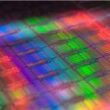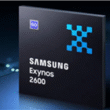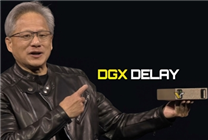NVIDIA Faces Challenges with the GB10 SuperChip Launch
Summary
- NVIDIA’s GB10 SuperChip and its related N1 series are facing significant delays and challenges in their market entry.
- Initial launch plans have been postponed multiple times, with OEMs unable to provide concrete release dates.
- The future of the N1 series, particularly for notebooks, appears uncertain, prompting concerns about premature product failures.
NVIDIA’s ambitious foray into the PC market has hit a considerable roadblock with the introduction of its GB10 SuperChip and the accompanying N1 series designed for notebooks. Though these products are seen as pivotal in establishing NVIDIA’s foothold in the PC sector, their market launch has been plagued with delays and uncertainties.
Delays and Market Response
Originally showcased at the beginning of the year alongside the DGX Spark personal supercomputer, the GB10 SuperChip was slated for a release in May. However, as the year progressed, OEMs like ASUS and HP reported successive postponements, first to July, then to September, and now rolling into the fourth quarter without a clear timeline.
As of October, NVIDIA’s official channels still list these products under “waiting for notification,” raising eyebrows in the tech community. OEMs have remained noncommittal regarding exact launch dates, with ASUS highlighting the uncertainty in its communications to the media.
OEMs Caught in the Scramble
While major manufacturers confirmed plans to release GB10 products in the fourth quarter, specific dates remain absent. This ambiguity was underscored by an incident with Scan UK, which initially provided a delivery date of September 15, only to revise it to September 30, and later abandon the date entirely. It’s evident that the launch timeline has become increasingly erratic, leaving manufacturers and consumers alike in a state of limbo.
Insights on Product Origins
Interestingly, NVIDIA’s CEO, Huang Renxun, shed light on the internal code name of the GB10, which is tied to the N1 series. This information indicates that the two product lines originate from the same foundational technology. However, the N1 series has already encountered its share of rumored setbacks, with speculation suggesting we may not see corresponding notebook models until much later, potentially the fourth quarter of next year.
With the clock ticking, industry watchers have begun to express concerns about the sustainability of these product lines. The hope is that NVIDIA can navigate these challenges and deliver on its promises, but if these delays continue, it may jeopardize not only the GB10 and N1 series but also NVIDIA’s reputation in the competitive tech landscape.
Conclusion
In conclusion, NVIDIA’s attempt to penetrate the PC market through the GB10 SuperChip and N1 series has not gone as planned, marked by various delays and a lack of clear communication from manufacturers. As we enter the fourth quarter of the year, the uncertainty surrounding these releases raises questions about their viability and potential impact in the market. Stakeholders and consumers alike will be hoping for straightforward updates and a successful turnaround, particularly as the stakes grow higher in an increasingly competitive tech industry.
As these developments continue to unfold, keeping an eye on NVIDIA’s next steps will be crucial for anyone invested in the future of PC technology and graphics processing.









